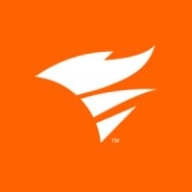

SolarWinds Server and Application Monitor and Elastic Observability are two leading tools in their respective domains. Based on user feedback, Elastic Observability seems to have the upper hand due to its advanced analytics and versatile features.
Features: SolarWinds offers in-depth performance monitoring, alerting mechanisms, and a user-friendly interface. Elastic Observability provides robust data analysis, visualization tools, and highly customizable dashboards.
Room for Improvement: SolarWinds needs better integration with third-party tools, more frequent updates, and improved scalability. Elastic faces a steep learning curve, requires a more intuitive setup process, and could benefit from enhanced user documentation.
Ease of Deployment and Customer Service: SolarWinds is relatively straightforward to deploy but has mixed customer service feedback. Elastic is slightly more complex to deploy but receives consistent praise for responsive and knowledgeable support staff.
Pricing and ROI: SolarWinds users are satisfied with the initial setup cost but are concerned about long-term ROI due to recurring subscription fees. Elastic’s pricing is higher upfront, but users find the advanced features justify the expense, resulting in a better perceived ROI.
| Product | Market Share (%) |
|---|---|
| Elastic Observability | 3.9% |
| SolarWinds Server and Application Monitor | 1.3% |
| Other | 94.8% |


| Company Size | Count |
|---|---|
| Small Business | 8 |
| Midsize Enterprise | 4 |
| Large Enterprise | 16 |
| Company Size | Count |
|---|---|
| Small Business | 16 |
| Midsize Enterprise | 8 |
| Large Enterprise | 20 |
Elastic Observability offers a comprehensive suite for log analytics, application performance monitoring, and machine learning. It integrates seamlessly with platforms like Teams and Slack, enhancing data visualization and scalability for real-time insights.
Elastic Observability is designed to support production environments with features like logging, data collection, and infrastructure tracking. Centralized logging and powerful search functionalities make incident response and performance tracking efficient. Elastic APM and Kibana facilitate detailed data visualization, promoting rapid troubleshooting and effective system performance analysis. Integrated services and extensive connectivity options enhance its role in business and technical decision-making by providing actionable data insights.
What are the most important features of Elastic Observability?Elastic Observability is employed across industries for critical operations, such as in finance for transaction monitoring, in healthcare for secure data management, and in technology for optimizing application performance. Its data-driven approach aids efficient event tracing, supporting diverse industry requirements.
SolarWinds Server & Application Monitor (SAM) delivers powerful application and server monitoring capabilities for IT pros, enabling them to diagnose and troubleshoot performance issues faster. Do not let slow applications and downtime impact your end-users and business services. Pinpoint the root cause of application issues across various layers of the IT stack. SolarWinds SAM is affordable and easy to deploy, use, and customize. You can automatically discover your system's environment and start monitoring in about an hour. No professional services or consultation needed.
We monitor all Application Performance Monitoring (APM) and Observability reviews to prevent fraudulent reviews and keep review quality high. We do not post reviews by company employees or direct competitors. We validate each review for authenticity via cross-reference with LinkedIn, and personal follow-up with the reviewer when necessary.